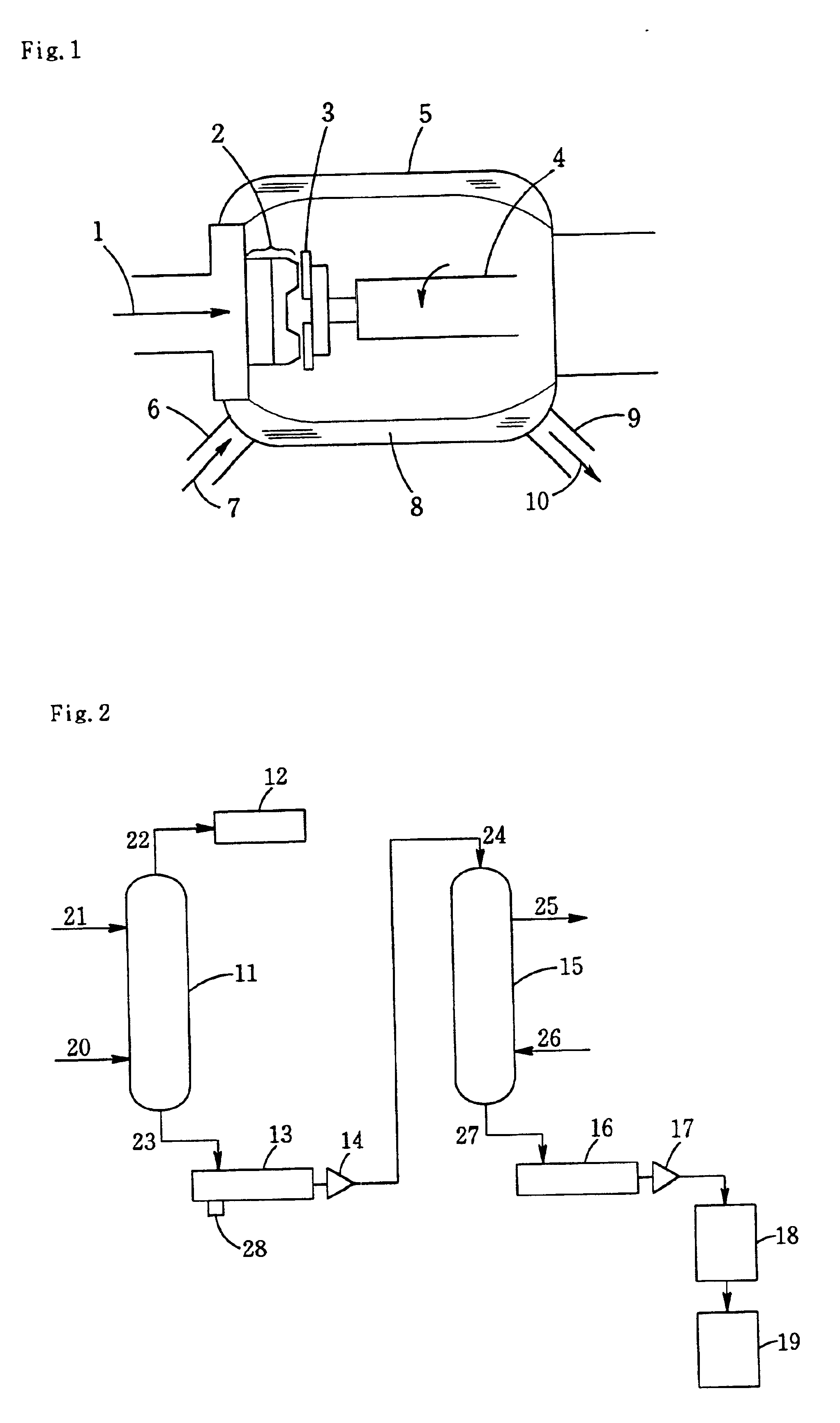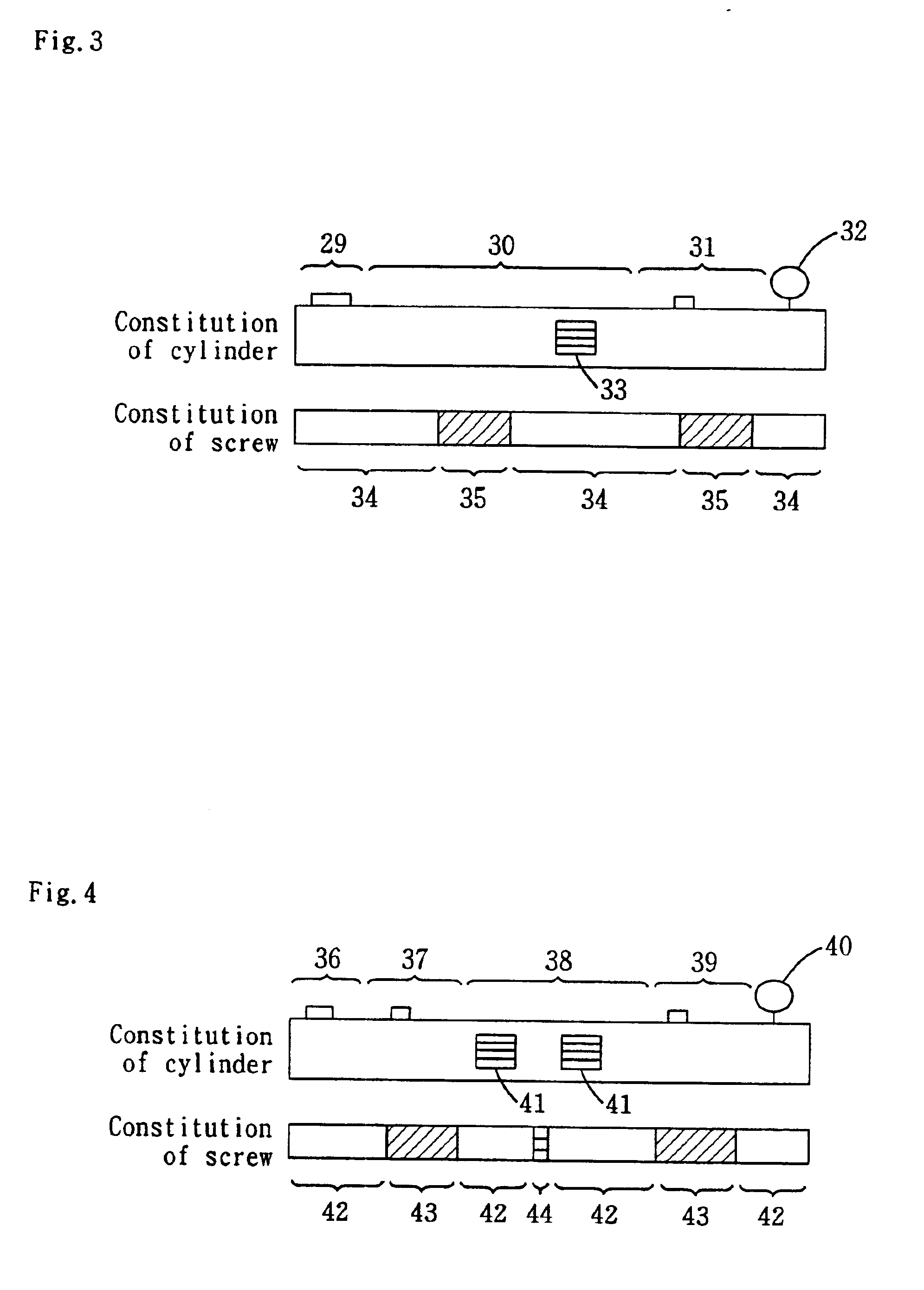Method for producing ethylene-vinyl alcohol copolymer resin
a technology of ethylenevinyl alcohol and copolymer, which is applied in the direction of colloidal chemistry, colloidal chemistry details, chemical/physical processes, etc., can solve the problems of inconvenient handling, and inability to meet the requirements of the invention, so as to improve the effect of the invention, facilitate handling, and easy to soluble
- Summary
- Abstract
- Description
- Claims
- Application Information
AI Technical Summary
Benefits of technology
Problems solved by technology
Method used
Image
Examples
example 1
An outline of the process of Example 1 is shown in FIG. 2. An EVOH solution containing 100 parts by weight of EVOH having an ethylene content of 32 mol % and a degree of saponification of 99.5 mol %, 100 parts by weight of methanol, 50 parts by weight of water and 2 parts by weight, in terms of sodium, of sodium acetate was continuously introduced into the 10-tier plate column 11 having a column diameter of 0.3 m, at its uppermost tier through the EVOH solution supply duct 21 at a feed rate of 52 kg / hr, while water vapor was jetted thereinto at the lowermost tier of the column through the water vapor supply duct 20 at a flow rate of 86 kg / hr, so that the EVOH solution was contacted with water vapor in countercurrent flow in the column. The temperature in the column was 130° C., and the pressure therein was 3 kg / cm2. The methanol vapor and water vapor evaporated out of the top of the column via the vapor discharge duct 22 and was condensed in the condenser 12, and the resulting aqueo...
example 2
The pellets (A) of Example 1 were fed into the column vessel having a diameter of 0.8 m and a height of 4 m through its top at a feed rate of 33 kg / hr. An aqueous treating solution comprising acetic acid / sodium acetate / magnesium acetate / potassium dihydrogenphosphate (50° C.) was fed into the vessel through its lower part at a feed rate of 500 liters / hr. The treating solution contained 1.7 g / liter of acetic acid, 0.67 g / liter of sodium acetate, 1.84 g / liter of magnesium acetate tetrahydrate and 0.77 g / liter of potassium dihydrogenphosphate. The treated pellets were continuously taken out through the bottom of the vessel. The pellets had a water content of 39%.
Next, the pellets were put into a twin-screw extruder, of which the constitution is the same as in FIG. 3 except that the screw at the site for minor component supply was changed to a full-flight screw. The resin temperature around the take-out port was 100° C.; and the feed rate of EVOH was 10.7 kg / hr (containing water). No min...
example 3
An EVOH solution containing 100 parts by weight of EVOH having an ethylene content of 35 mol % and a degree of saponification of 99.5 mol %, 100 parts by weight of methanol, 50 parts by weight of water and 1.5 parts by weight, in terms of sodium, of sodium acetate was continuously introduced into the 10-tier plate column having a column diameter of 0.3 m, at its uppermost tier at a feed rate of 52 kg / hr, while water vapor was jetted thereinto at the lowermost tier of the column at a flow rate of 86 kg / hr, so that the EVOH solution was contacted with water vapor in countercurrent flow in the column. The temperature in the column was 130° C., and the pressure therein was 3 kg / cm2. The methanol vapor and water vapor that evaporated out of the column through its top was condensed in the condenser, and the resulting aqueous methanol solution was recovered. The aqueous EVOH composition thus produced was continuously removed from the bottom of the column. The aqueous EVOH composition conta...
PUM
| Property | Measurement | Unit |
|---|---|---|
| Temperature | aaaaa | aaaaa |
| Temperature | aaaaa | aaaaa |
| Temperature | aaaaa | aaaaa |
Abstract
Description
Claims
Application Information
 Login to View More
Login to View More - R&D
- Intellectual Property
- Life Sciences
- Materials
- Tech Scout
- Unparalleled Data Quality
- Higher Quality Content
- 60% Fewer Hallucinations
Browse by: Latest US Patents, China's latest patents, Technical Efficacy Thesaurus, Application Domain, Technology Topic, Popular Technical Reports.
© 2025 PatSnap. All rights reserved.Legal|Privacy policy|Modern Slavery Act Transparency Statement|Sitemap|About US| Contact US: help@patsnap.com


